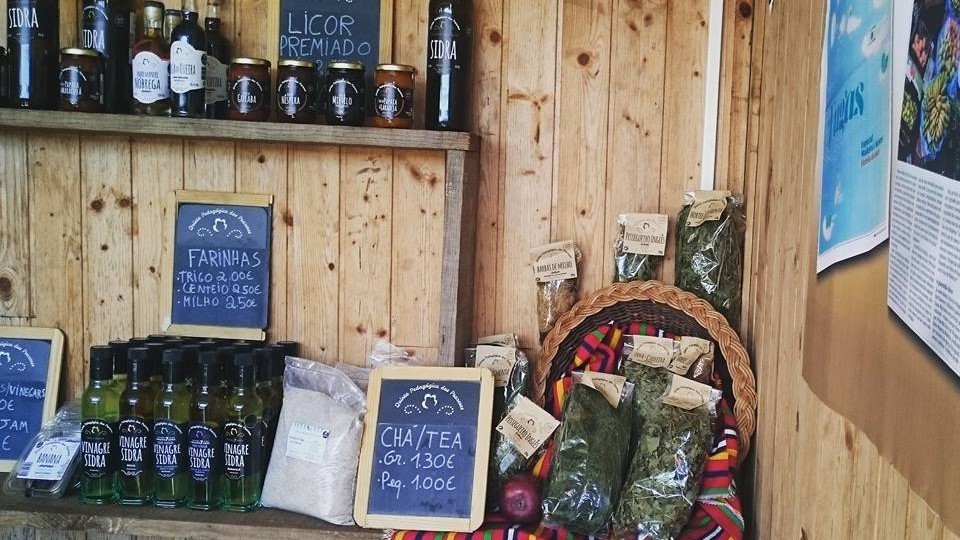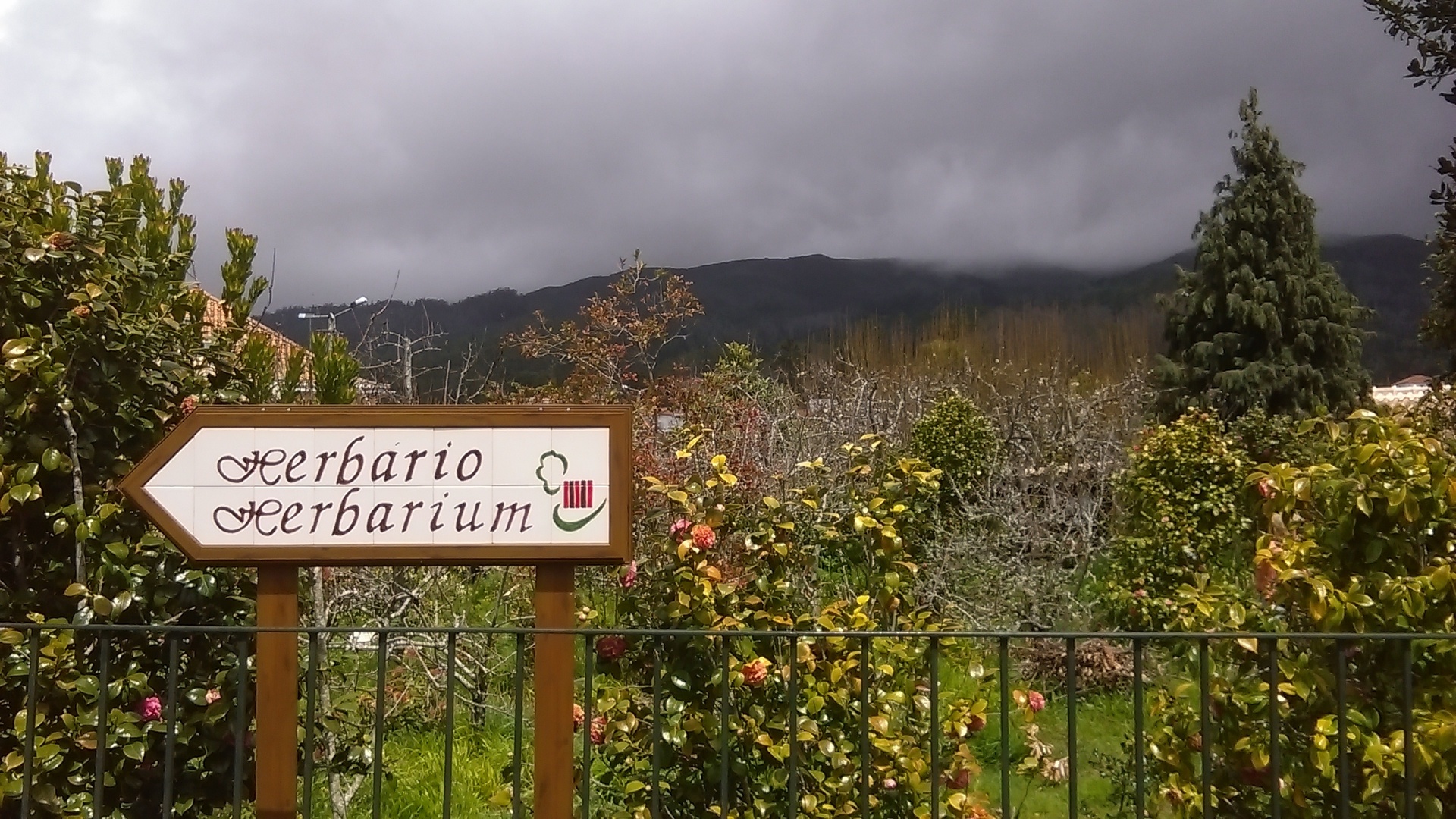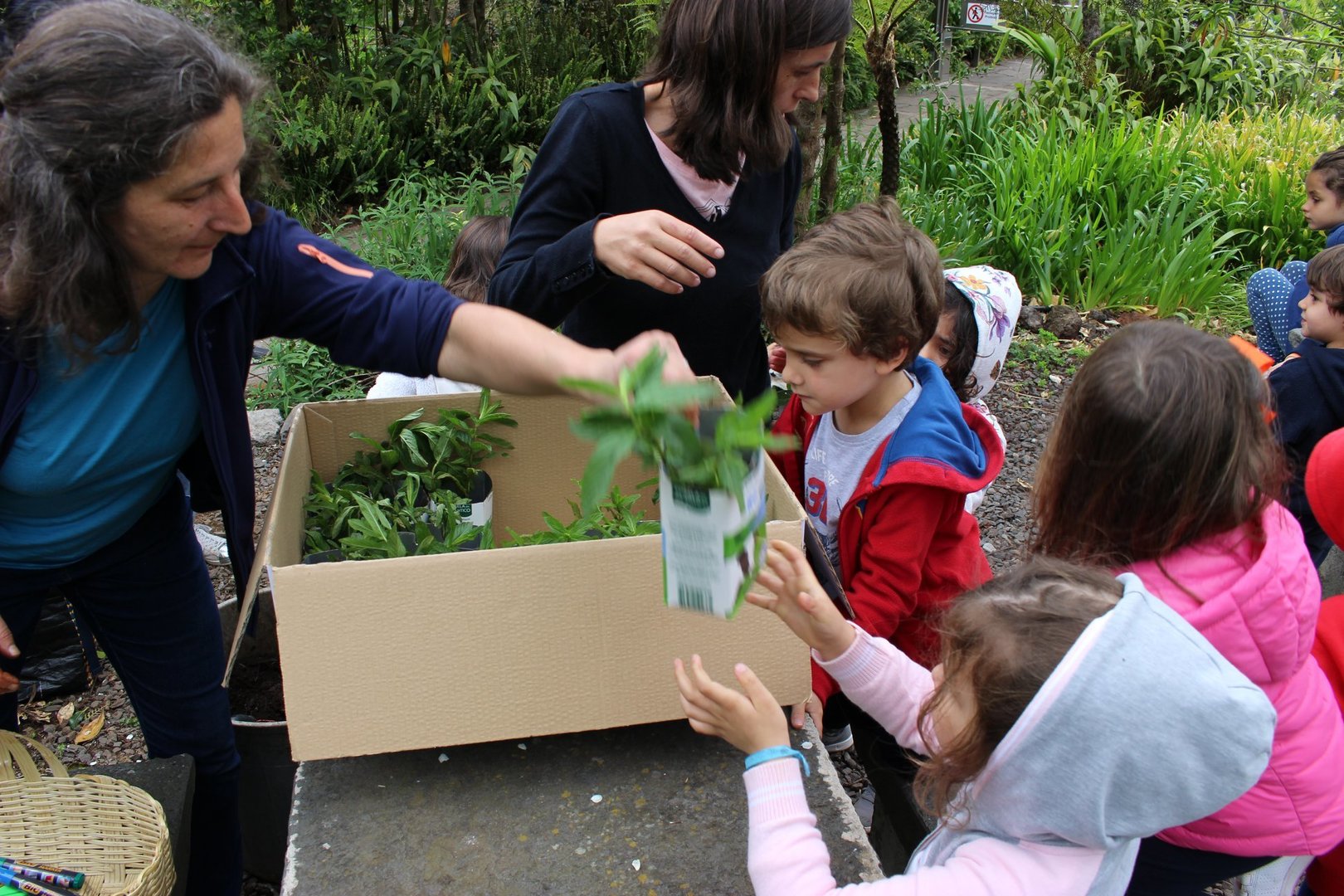
If there is one reason to get on a bus in Funchal and take a two-hour arduous journey full of twists and turns with stops at unexpected places, it is a visit of Quinta Pedagógica dos Prazeres. This place is the perfect example of a well-functioning and self-sustaining enterprise that goes beyond the pursuit of profitability and tries instead to comply with social and environmental needs. Furthermore, this project is revitalising a location that is far from the main points of interest of Madeira Island.
Quinta Pedagógica dos Prazeres (Pedagogical Farm of Prazeres) is a project of education, socio-cultural evolution and rural development, aimed at stimulating the local economy and combating desertification. Created in October 2000, it recognises its public interest in the educational, cultural, economic and social areas. It is promoted by the local parish, and it is lead by its priest who is behind the project from its very beginning. It was him who had the idea to buy the surrounding land to cultivate it and eventually to open a Pedagogical farm. “He is still the leader, heart and soul of the project, a natural born entrepreneur and a man with a vision”, says Nélio Sousa, teacher and coordinator of education service in Quinta Pedagógica.
Later, the parish decided to buy other adjacent properties which are currently used as a Gallery of contemporary art (Galeria dos Prazeres) and a Cider House with a small museum in the attic room, where a collection of volcanic rocks and fossils is exhibited.

The Galeria dos Prazeres offers art residency to 4 artists each year. Besides showing contemporary art, one of the main goals of the gallery is the interaction and connection between the artist and the local community and territory. The author of the current exposition himself refers to this purpose very aptly in the exhibition brochure “One of the things that I have seen after doing this for a while, is that it creates a new set of connections between people, places and communities. Most connections we have are based on business or politics (in the broadest sense), or faith or family-and those can be very beautiful(...)But the connection from Kymaerxthaere is more serendipitous-just because these places happen to have a vast, 140-piece (and growing) artwork, experienced in common.”
The artist and storyteller Eames Demetrios made for Prazeres an installation piece, which itself is a part of Kymaerxthaere, a global work of three-dimensional fiction, a project that tells stories of the parallel world through installations, books, performances and other media. The exhibition called Where the Tenderness Began can be seen in The Galeria dos Prazeres until the 21st of April.

In 2008 the parish bought another old, traditional Madeiran house made of volcanic stone, which then reconstructed and opened to the public in 2013. The building, entitled Herbário Comunitário dos Prazeres Padre Manuel de Nóbrega, bears the name of a significant personage from the island. “Padre Manuel de Nóbrega was a famous Madeiran botanist and naturalist who died in October 2017. He was the last of the line of local priests who traditionally devoted themselves to botany” says Nélio Sousa, and he suggests that this great interest in botany was caused not only by the exuberant and beautiful surrounding nature. It was also the original and interactive educational methods used at the local seminary in Funchal at the end of the 19th century by a German priest, naturalist and researcher named Ernst Schmitz, that stimulated their curiosity in this particular field. He introduced the subjects of natural history and physics, which was innovative at the time.

Offering many activities not only for the visiting families but also for school groups, the Quinta Pedagógica continues in the tradition of such interactive methods of study integrated into the pedagogical philosophy and practice. Their schooling methods are aimed at complementing the theoretical contents of the teaching with the development of general skills, literacy and education for citizenship. Anchored in the local identity, the educational potential becomes effective through a set of pedagogical activities in various fields: botany, geology, livestock, agriculture, tradition and popular culture (customs), environmental awareness and art and cultural education.
The parish provides a series of social and cultural projects and related activities through the effective management and sale of their products manufactured in the Pedagogical farm. All the fruits and vegetables used to make their products are either grown directly on the farm or bought from the local farmers, supporting the local economy. The Quinta has now ten employees and volunteers, and it is fully self-sustainable and autonomous except for the Art Gallery that is partly supported by a fund of Municipality of Calheta.

To my question, how is this even possible, the coordinator replies that the secret is never to stop thinking of innovations, new possibilities and achievements. The project cannot only be maintained as it is because it would become stereotypical and uninteresting both for the visitors and the employees. He adds that “Our autonomy is only possible because the public recognises and values the project, as it largely contributes to society by the educational program, local development and its social economy orientation.”
I can only agree with him and wish for more self-sufficient, successful, and meaningful projects such as this one.